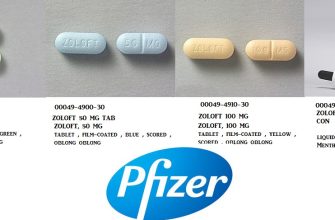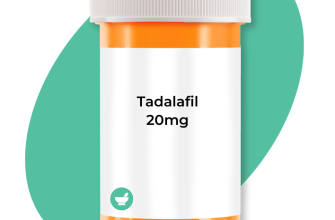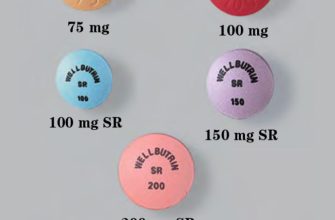Suspect a retinal hole? Schedule an immediate ophthalmologist appointment. Early detection significantly improves treatment success rates and minimizes vision loss risk. This is not a condition to ignore; prompt action is key.
Retinal holes, small tears in the retina, often present with floaters–those pesky specks or strands you see drifting across your vision–and possibly flashes of light. However, many retinal holes are asymptomatic, making regular eye exams crucial, especially for individuals over 50 or with a family history of retinal detachment. These exams allow for timely intervention before serious complications arise.
Treatment options depend on the hole’s size and location. Smaller holes often heal spontaneously with observation and careful monitoring. Laser photocoagulation is a common procedure for larger or more complex holes. This outpatient procedure seals the tear, preventing retinal detachment, a far more serious condition that can lead to permanent vision impairment.
Post-treatment, your ophthalmologist will provide specific instructions. These usually involve avoiding strenuous activities for a period to allow the retina to heal properly. Follow-up appointments are vital to monitor healing progress and ensure the hole remains closed.
Remember, protecting your vision is paramount. Regular eye check-ups and immediate attention to any vision changes are your best defenses against retinal holes and related conditions. Don’t delay – seek professional care if you experience symptoms.
- Retinal Hole: A Comprehensive Guide
- What is a Retinal Hole?
- Types of Retinal Holes
- Causes and Risk Factors
- Symptoms of a Retinal Hole: Recognizing the Signs
- Causes and Risk Factors of Retinal Holes
- Specific Risk Factors
- Diagnosing a Retinal Hole: Tests and Procedures
- Ophthalmoscopy
- Other Diagnostic Tools
- Imaging Summary Table
- Next Steps
- Treatment Options for Retinal Holes: Laser Surgery and Other Methods
- Laser Photocoagulation
- Vitrectomy
- Other Methods:
- Post-Treatment Care:
- Recovery After Retinal Hole Treatment: What to Expect
- Preventing Retinal Holes: Lifestyle and Eye Care Tips
- Protecting Your Eyes Daily
- Dietary and Lifestyle Choices
- Recognizing Symptoms
- Further Considerations
- When to Seek Immediate Medical Help
- Potential Complications of Untreated Retinal Holes
- Vision Loss & Blindness
- Increased Risk of Other Eye Conditions
- Challenges in Treatment
- Actionable Steps
- Secondary Complications of Surgery
- When to See an Ophthalmologist: Seeking Timely Medical Attention
- Recognizing Other Warning Signs
Retinal Hole: A Comprehensive Guide
Consult an ophthalmologist immediately if you experience sudden flashes of light or floaters. Early detection significantly improves treatment outcomes.
A retinal hole is a small tear in the retina, the light-sensitive tissue lining the back of your eye. This tear can lead to retinal detachment, a serious condition requiring prompt surgical intervention.
Risk factors include high myopia (nearsightedness), eye trauma, previous eye surgery, and aging. Family history also plays a role.
Symptoms vary, but commonly include new-onset floaters (small spots or specks in your vision), flashes of light in your peripheral vision, and a shadow or curtain in your vision. These symptoms warrant immediate medical attention.
Diagnosis involves a dilated eye exam using an ophthalmoscope. This allows your doctor to thoroughly examine your retina.
Treatment depends on the size and location of the hole, as well as the presence of retinal detachment. Options range from laser treatment to cryotherapy (freezing) to vitrectomy (surgical removal of vitreous gel).
Laser treatment seals the hole, preventing detachment. Cryotherapy achieves a similar result. Vitrectomy is a more invasive procedure but is necessary for a detached retina.
Post-operative care includes avoiding strenuous activities and following your ophthalmologist’s instructions carefully. Regular follow-up appointments are critical for monitoring healing.
Prevention focuses on managing underlying conditions like myopia. Protecting your eyes from trauma is also paramount.
While vision may improve after treatment, some vision loss may remain. The goal of treatment is to prevent further vision loss and maintain the best possible visual acuity.
What is a Retinal Hole?
A retinal hole is a small tear or break in the retina, the light-sensitive tissue lining the back of your eye. This break usually occurs near the periphery (edges) of the retina.
Types of Retinal Holes
There are different types, including asymptomatic, symptomatic, and those associated with retinal detachment. Symptomatic holes might cause flashes of light or floaters – tiny specks or strands that drift across your vision. A retinal detachment, a more serious complication, happens when the retina separates from the underlying tissue. This requires immediate medical attention.
Causes and Risk Factors
Retinal holes frequently result from eye trauma, but they can also develop naturally, especially with age. Nearsightedness (myopia), previous eye surgery, and family history of retinal problems increase the risk. Some people experience them without any discernible cause.
Early detection is key. Regular eye exams, especially after age 40 or if you have risk factors, are vital. If you experience sudden flashes or floaters, seek immediate ophthalmological consultation. Early treatment usually involves laser surgery or cryotherapy to seal the hole, preventing a detachment.
Symptoms of a Retinal Hole: Recognizing the Signs
Notice any sudden flashes of light in your vision? This is a key sign, often described as bright streaks or sparks. Don’t ignore it!
Next, check for floaters. These are tiny specks or strands that appear to drift across your vision. A sudden increase in their number or size warrants immediate attention.
Blurred vision, particularly in one eye, is another potential indicator. The blurriness might be subtle at first, gradually worsening.
Finally, be aware of a shadow or curtain-like effect obscuring part of your vision. This indicates a more advanced stage and requires urgent medical evaluation.
| Symptom | Description | Significance |
|---|---|---|
| Flashes of light | Sudden bright streaks or sparks | Early warning sign |
| Floaters | Tiny specks or strands drifting across vision | Increase in number or size is significant |
| Blurred vision | Reduced clarity, often in one eye | Can indicate progression |
| Vision loss (curtain effect) | Shadow or curtain obscuring part of your vision | Requires immediate medical attention |
Experiencing any of these? Seek immediate ophthalmological consultation. Early detection significantly improves treatment outcomes.
Causes and Risk Factors of Retinal Holes
Retinal holes frequently result from age-related vitreous detachment. As we age, the vitreous gel inside our eye shrinks and pulls away from the retina. This pulling can create a hole or tear. Myopia (nearsightedness) significantly increases your risk, with higher degrees of myopia correlating to a greater chance of developing a retinal hole. Other factors contributing to retinal holes include eye trauma, such as a blow to the eye, and certain eye diseases like diabetes and high blood pressure.
Specific Risk Factors
Individuals with a family history of retinal holes have a higher probability of developing them. Certain eye surgeries, particularly cataract surgery, can also increase the risk, although this is relatively uncommon. Finally, strenuous activities involving sudden head movements or strong impacts can contribute to retinal hole formation. Regular eye exams are vital for early detection, especially if you fall into any of these high-risk categories. Prompt diagnosis allows for timely intervention, minimizing potential vision loss.
Diagnosing a Retinal Hole: Tests and Procedures
Your ophthalmologist will use several methods to diagnose a retinal hole. The first step usually involves a dilated eye exam. This means your doctor will put drops in your eyes to widen your pupils, allowing for a clearer view of your retina.
Ophthalmoscopy
During the dilated eye exam, your doctor will use an ophthalmoscope, a device with a light, to examine the inside of your eye. They’ll specifically look for the hole, as well as any retinal tears or detachments. The ophthalmoscope provides a direct visualization of the retina.
Other Diagnostic Tools
Other tools may be used to get a more detailed image. Optical coherence tomography (OCT) uses light waves to create a cross-sectional image of your retina, providing a detailed view of its layers and helping identify the size and location of the hole. Fluorescein angiography involves injecting a dye into your vein and taking pictures of your retina to highlight blood vessels and identify any leakage.
Imaging Summary Table
| Test | Description | Purpose |
|---|---|---|
| Dilated Eye Exam | Direct visualization of the retina with an ophthalmoscope. | Initial assessment for retinal holes, tears, and detachments. |
| Optical Coherence Tomography (OCT) | Uses light waves to create a cross-sectional image of the retina. | Detailed visualization of retinal layers and hole characteristics. |
| Fluorescein Angiography | Involves injecting dye to highlight blood vessels. | Detects retinal bleeding or leakage. |
Next Steps
After diagnosis, your doctor will discuss treatment options, which may include laser surgery or vitrectomy, depending on the severity and location of the hole. Prompt diagnosis and treatment are key to preventing vision loss.
Treatment Options for Retinal Holes: Laser Surgery and Other Methods
Retinal hole repair typically involves laser surgery or vitrectomy. The best approach depends on the size and location of the hole, as well as your overall eye health.
Laser Photocoagulation
Laser surgery is often the first choice for small, uncomplicated retinal holes. The ophthalmologist uses a laser to create small burns around the hole’s edge, sealing it shut. This procedure is usually performed in an outpatient setting and requires only local anesthesia. Expect minimal discomfort, potentially some mild light sensitivity afterward. Recovery is generally quick, but regular follow-up appointments are necessary to monitor healing.
Vitrectomy
For larger or more complex retinal holes, a vitrectomy may be needed. This involves removing some of the vitreous gel from the eye, allowing the retina to flatten against the back wall. This procedure requires general or local anesthesia and is usually performed in a hospital setting. A small incision is made to remove the vitreous, and a gas bubble or silicone oil may be injected to help hold the retina in place during healing. Recovery takes longer than laser surgery, and you may experience vision changes for several weeks or months.
Other Methods:
- Pneumatic Retinopexy: This less invasive technique injects a gas bubble into the eye to help flatten the retina, facilitating closure. It’s a good option for certain types of retinal holes. However, this usually requires adopting specific body positions for a period after the treatment.
- Scleral Buckling: This involves placing a small band around the outside of the eyeball, indenting the sclera (the white part of the eye) and pressing the retina against the back wall. It’s primarily employed for retinal detachment, but might be used in specific cases of retinal holes, usually in conjunction with other treatments.
Post-Treatment Care:
- Expect post-operative instructions specific to your procedure.
- Follow these instructions meticulously for optimal healing and to minimize complications.
- Regular follow-up appointments are crucial to monitor your progress and ensure complete healing.
Remember, this information serves as a general overview. Your ophthalmologist will discuss your specific situation and recommend the most appropriate treatment plan for your retinal hole.
Recovery After Retinal Hole Treatment: What to Expect
Rest is key. Expect to limit strenuous activity for several weeks, possibly longer depending on the procedure and your surgeon’s instructions. Avoid heavy lifting, straining, and bending over.
You’ll likely experience some discomfort, potentially including mild eye pain or pressure. Your doctor will prescribe pain medication to manage this. Use it as directed.
Expect follow-up appointments. These are critical for monitoring healing progress. Your surgeon will schedule these visits and explain what to anticipate at each. Attend every scheduled appointment.
Vision changes are common. You may experience blurry vision or floaters initially. These gradually improve over time for most patients. Be patient; complete healing takes time.
Eye drops are frequently prescribed to prevent infection and reduce inflammation. Follow your doctor’s instructions meticulously regarding their administration. This is a crucial step.
Driving is generally restricted until your vision clears sufficiently, as determined by your ophthalmologist. Plan for alternative transportation during this period.
Full recovery timelines vary. Some individuals notice significant improvement within a few weeks, while others may require several months for complete healing. Your individual recovery depends on factors such as the size and location of the retinal hole and your overall health.
Important Note: Contact your ophthalmologist immediately if you experience sudden vision loss, increased pain, or flashes of light. These could indicate complications.
This information is for general guidance only and does not replace professional medical advice. Always follow your doctor’s specific instructions.
Preventing Retinal Holes: Lifestyle and Eye Care Tips
Regular eye exams are crucial. Schedule yearly check-ups, especially if you have a family history of retinal problems or are nearsighted.
Protecting Your Eyes Daily
- Wear protective eyewear during contact sports or any activity with a risk of eye injury. This includes safety glasses for work and sports goggles.
- Avoid rubbing your eyes vigorously. This can increase pressure and potentially damage the retina.
- Manage blood pressure and diabetes diligently. These conditions can increase your risk of retinal complications.
- Quit smoking. Smoking significantly increases the risk of many eye diseases, including retinal holes.
Dietary and Lifestyle Choices
- Eat a diet rich in antioxidants and omega-3 fatty acids. Leafy greens, berries, and fatty fish are excellent choices.
- Maintain a healthy weight. Obesity is linked to increased risk of several health problems, including eye diseases.
- Get regular exercise. Physical activity benefits overall health, including eye health.
Recognizing Symptoms
Know the signs! Sudden appearance of floaters, flashes of light, or a shadow in your vision requires immediate attention. See an ophthalmologist or optometrist immediately.
Further Considerations
When to Seek Immediate Medical Help
- Sudden onset of many floaters
- Sudden flashes of light
- Curtain-like vision loss
- Distorted vision
Prompt medical attention can significantly improve outcomes.
Potential Complications of Untreated Retinal Holes
Ignoring a retinal hole significantly increases your risk of serious vision problems. Prompt treatment is key to preserving your sight.
Vision Loss & Blindness
The most concerning complication is retinal detachment. A retinal hole allows fluid to seep behind the retina, separating it from the underlying tissue. This detachment obscures vision, and if left untreated, can lead to permanent vision loss or even blindness. The speed of vision loss varies, but it’s a critical concern.
Increased Risk of Other Eye Conditions
- Vitreous hemorrhage: Bleeding into the vitreous gel (the clear, jelly-like substance filling your eye) can cause blurry vision, floaters and decreased visual acuity. This is a common consequence of retinal detachment.
- Glaucoma: While not a direct consequence, retinal detachment can sometimes lead to secondary glaucoma, increasing intraocular pressure and damaging the optic nerve.
- Macular degeneration: If the detachment affects the macula (the central part of the retina responsible for sharp vision), macular degeneration can develop leading to further vision loss.
Challenges in Treatment
Delayed treatment makes surgical repair of a retinal detachment more complex and less successful. The longer the detachment persists, the more likely scar tissue will form, hindering the surgical outcome. This increases recovery time and reduces the chance of regaining full vision.
Actionable Steps
- Schedule an immediate ophthalmologist appointment if you experience symptoms such as flashes of light, floaters, or a curtain-like vision loss.
- Follow your ophthalmologist’s recommendations diligently regarding treatment and follow-up care.
- Understand that early diagnosis is crucial for successful treatment and vision preservation.
Secondary Complications of Surgery
While surgery is generally effective, potential complications exist. These include infection, bleeding, and unforeseen issues affecting the retina or surrounding tissues. Discuss these possibilities openly with your surgeon.
When to See an Ophthalmologist: Seeking Timely Medical Attention
Schedule an immediate appointment if you experience sudden flashes of light or floaters, especially if they increase in number or intensity. These symptoms can indicate a retinal tear or detachment, requiring urgent attention.
See your ophthalmologist within 24 hours if you notice a sudden loss of vision, even if partial. This could signal a serious problem needing prompt treatment.
Recognizing Other Warning Signs
Contact your doctor if you have blurry vision accompanied by pain in your eye. Persistent eye pain warrants immediate medical assessment.
Also, report any unusual distortions in your vision, like seeing wavy lines or objects appearing distorted. This may indicate retinal damage. Don’t delay–timely intervention often leads to better outcomes.
Regular eye exams are crucial for early detection of retinal holes and other eye conditions. Follow your ophthalmologist’s recommendations for check-ups, tailored to your individual risk factors.









